Toolik's 2022 TUNDRA awardees share research updates
July 17, 2023
Haley Dunleavy
907-474-6407
In 2020, Toolik Field Station, in collaboration with our Steering Committee, started our donation-based early career research award to cover the costs of user days for early career researchers. Known as the TUNDRA award, short for Toolik User days for Naturally Developing Research Abilities, this program funds selected students and early career researchers with up to ten days at the field station to conduct an independent research project. After delays due to COVID, we finally were able to welcome our inaugural cohort of TUNDRA awardees in summer 2022.
Assistant professor Morag Clinton dove into nearby lakes, searching for emerging diseases in Arctic fish. Research scientist Alex Michaud dug into microbial sources of nutrients being released from emerging thermokarsts. PhD candidates Megan Wilcots and Chelsea Smith filled critical gaps in our collective knowledge about carbon dynamics in the Toolik region. Megan expanded our understanding of tundra responses to the Arctic LTER’s 16-year nutrient gradient experiment by measuring fluxes throughout the growing season. Chelsea took some of the first sediment cores on the long-studied Toolik Lake to identify if iron complexes were stabilizing carbon in the lake bed.
Read updates from the awardees on their preliminary findings below.
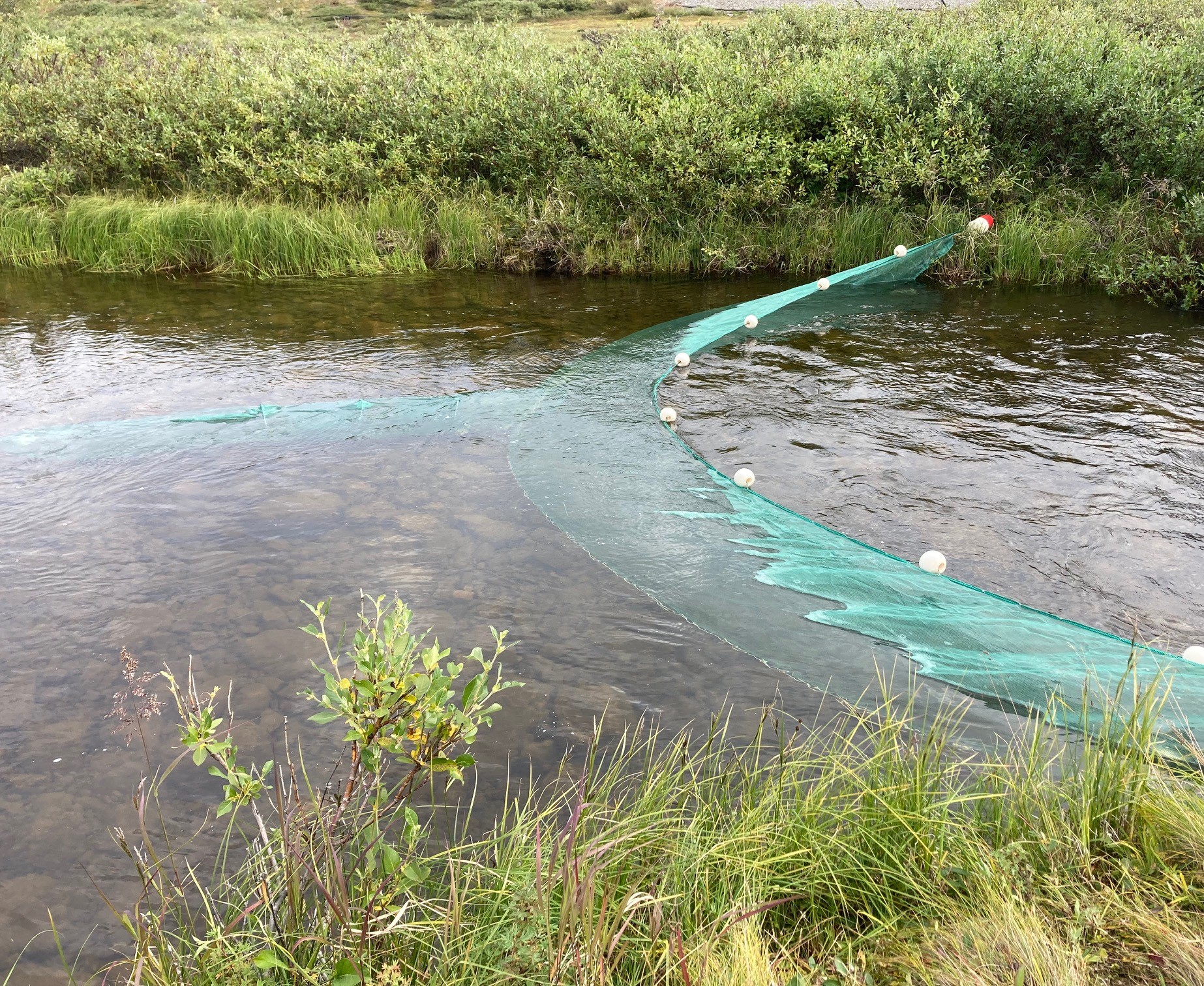
In August 2022, professor Morag Clinton sampled Arctic grayling from Toolik Lake using nets like the one pictured above.
Morag Clinton
As temperatures rise, the ranges of fish diseases are expanding, and Arctic Alaska is no exception. Morag’s TUNDRA award project investigated potential emerging diseases in Arctic grayling populations.
Last August, Morag conducted fish health screenings on grayling in Toolik Lake. Initial findings showed an array of pathogens present in the gills, gastrointestinal tract, and abdominal viscera of Toolik’s population. These included nematodes and cestode parasites and evidence of Broad tapeworm, which can be harmful to humans when fish aren’t properly cooked.
Although Morag didn’t find evidence of emerging diseases in Toolik, she observed multiple parasites with known impacts on fish health. While their impact is considered minimal when infectious burdens are low, when in combination with other infectious stressors these parasites can have amplified negative health impacts. The added environmental stress of warming could result in severe consequences to population health and survival.
Morag will further assess how these varied parasitic burdens influence overall fish immunology as she continues in her position as assistant professor in UAF’s Department of Veterinary Medicine and faculty team member on the NSF Research Trainee and Navigating the New Arctic, Tamamta Program.
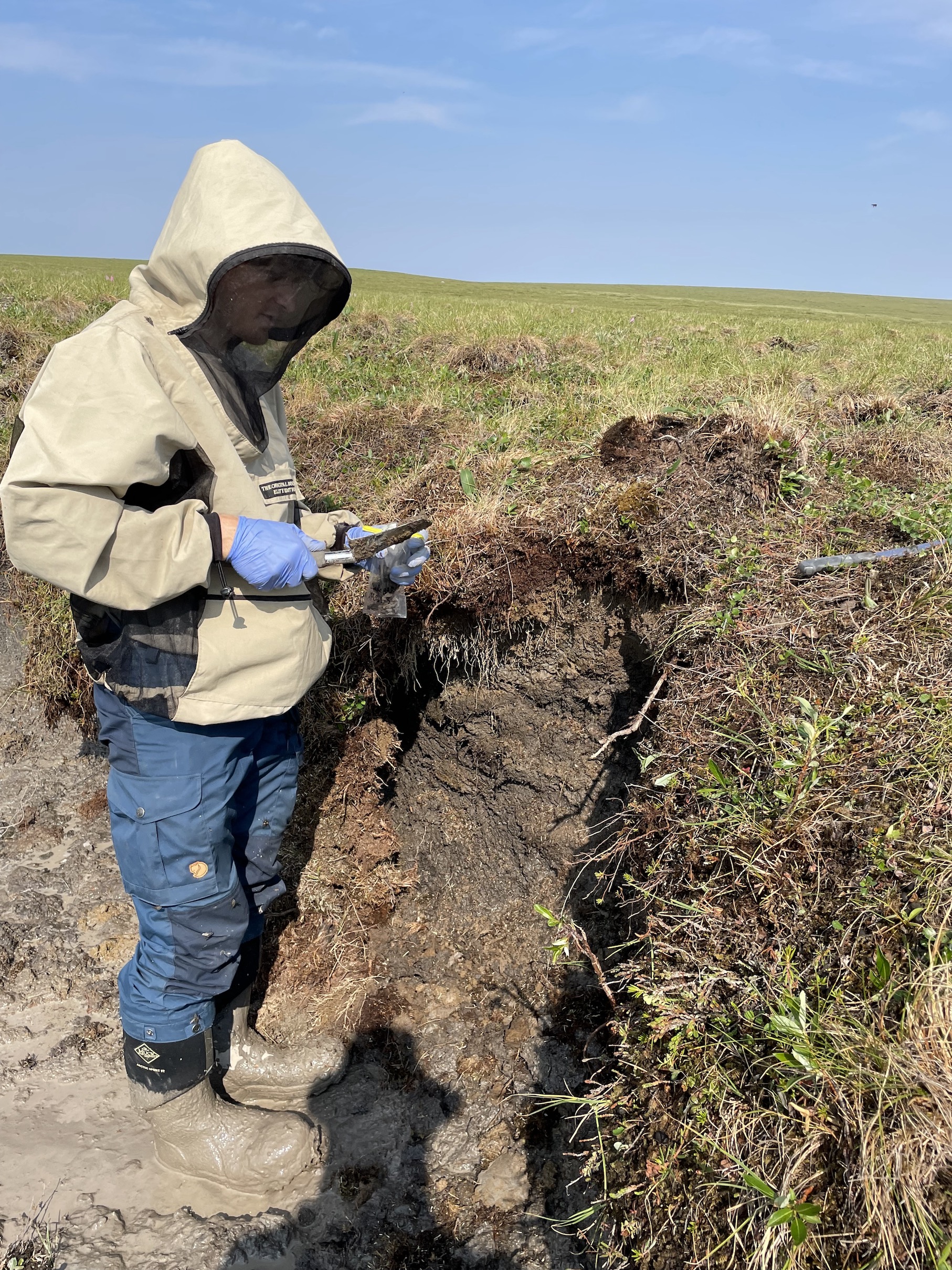
Researcher Alex Michaud sampled soil from a thermokarst headwall on Alaska's North Slope.
Alex Michaud
Thermokarsts, resulting from rapid thawing and collapse of permafrost rich in ground-ice, are drastically transforming the physical environments of tundra and downstream ecosystems. But as thaw slumps develop, soil and aquatic microorganisms may be altering nutrient cycling as well. Alex’s TUNDRA project, “Micro-SWEAT: Microbial Sources of Weathering in Emerging Arctic Thermokarst, ” originally awarded in 2020, seeks to understand the role microbes play in releasing nutrients from thermokarst disturbance features.
Last summer, Alex visited three different thermokarst slumps, collecting organic and mineral soils from the headwalls and mud slurry from within the slump. He also sampled small streams emerging from the thermokarsts and water from lake shorelines downslope of the thaw slumps. Alex is currently sequencing DNA extracted from these samples to identify how microbial communities change along the continuum from headwall to lake. Additionally, Alex will use metagenomic sequencing to assess how microbiome function changes along one thermokarst.
Alex’s TUNDRA award allowed him to leverage a seed grant to support further analysis of this data from Bigelow Laboratory for Ocean Sciences, where he works as a research scientist.
Chelsea Smith
Arctic lakes have historically acted as long-term geologic sinks for carbon, but this could shift as conditions in sediment beds, like redox potential or increased mineral inputs, change. Chelsea cored five different areas across Toolik Lake to assess if carbon is being stabilized in lake sediments and what metals, if any, may be interacting with it.
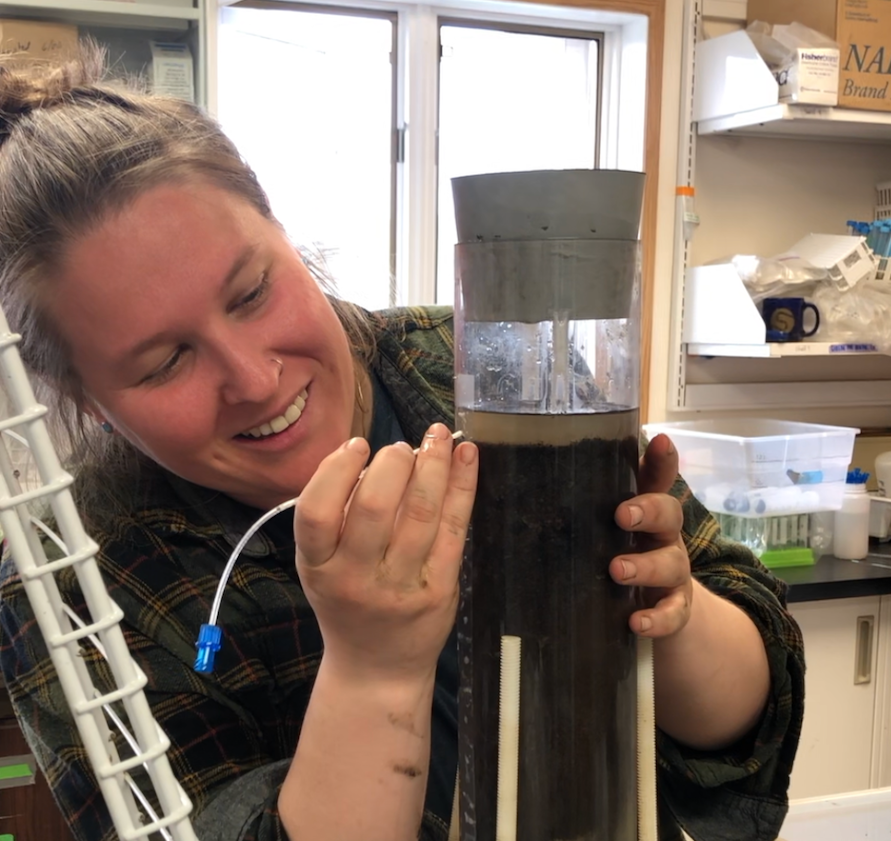
Smith sampled porewater from Toolik sediment cores, on which she then conducted further chemical analyses at her home lab.
Then PhD candidate Chelsea Smith and her research assistant Kyle Smart sampled Toolik Lake using a gravity corer.
So far, Chelsea’s found preliminary evidence that carbon stabilization in Toolik Lake is highly heterogenous. Some parts of Toolik Lake seem to be dominated by iron, but other parts by manganese. These spatial differences could alter how much carbon is sequestered in sediments and may mean that some areas of the lake are better carbon sinks than others. The isotopic signature of dissolved inorganic carbon in the lake water column and sediment, specifically δ13C, suggest that some parts of the lakebed may be hot spots for organic matter degradation. Furthermore, Chelsea found evidence of consistent methane production in Toolik’s sub-surface sediment layers.
Chelsea graduated this spring with her PhD from Kent State University and is continuing her research on carbon in Arctic lakes as a postdoctoral researcher. Chelsea is using data she collected during her TUNDRA project as preliminary evidence in several research proposals, one of which is currently in review.
Megan Wilcots
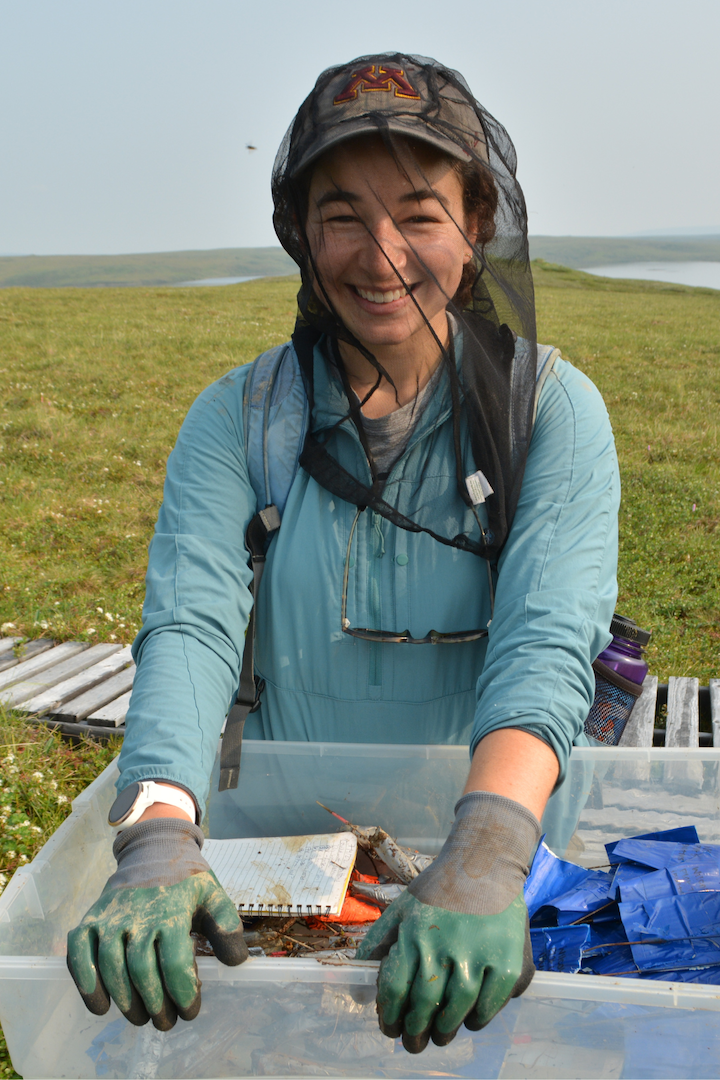
Then PhD candidate, Megan Wilcots, sampled a long-term fertilization gradient experiment near Toolik Field Station.
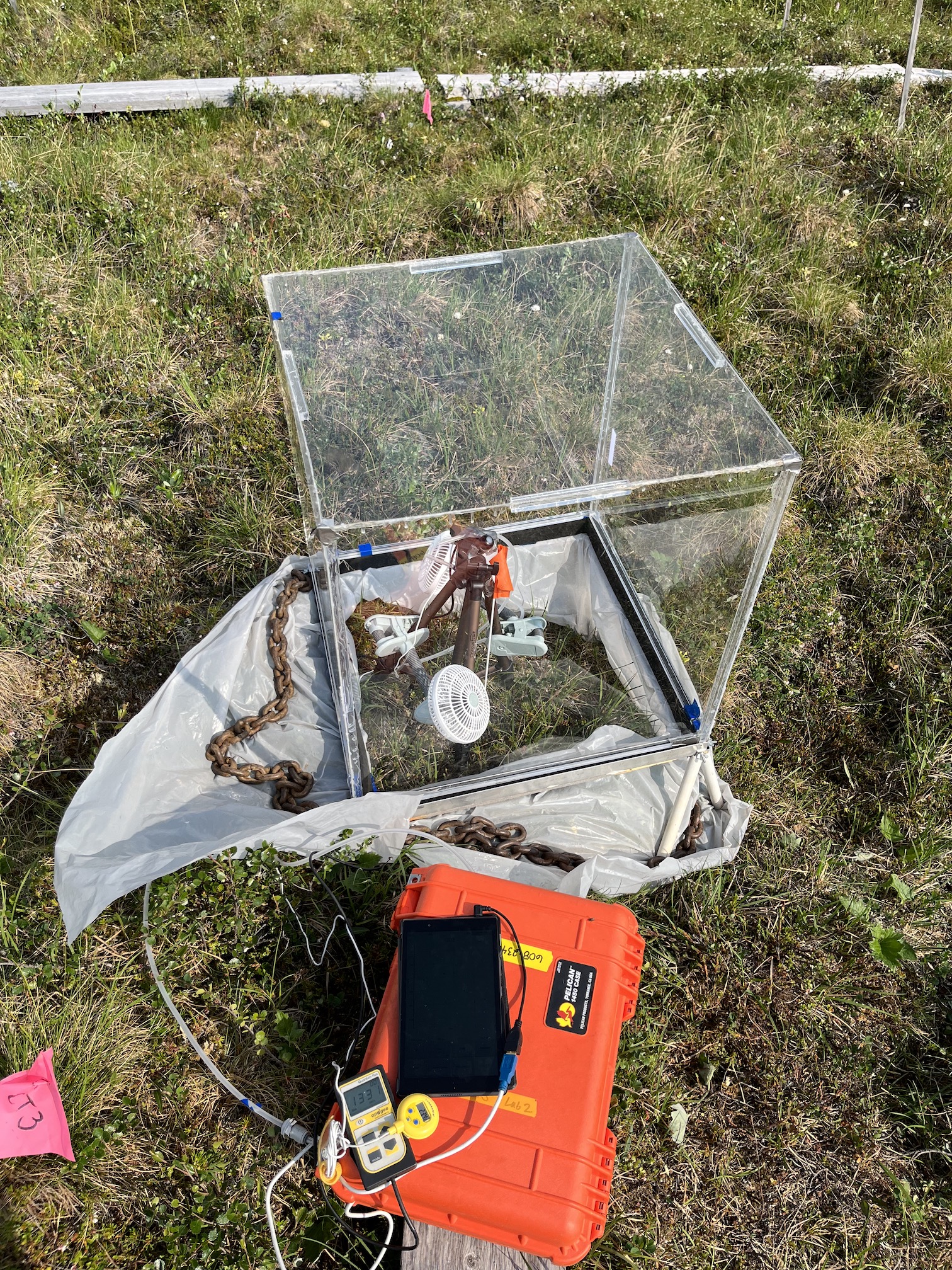
Wilcots measured photosynthesis and respiration using chambers.
Long-term research at Toolik has shown that relieving tundra plant nutrient limitations has dramatic consequences on plant community composition and carbon cycling. But how do smaller amounts of nutrient addition – those likely more realistic with expected future releases – affect plants and carbon? Megan’s TUNDRA award extended her independent research project, Assessing the effects of increasing nutrient availability on CO2 fluxes in the Alaskan Arctic, to allow these questions to be asked across the growing season.
Last summer, Megan measured net ecosystem carbon flux, soil respiration, and plant traits in the Arctic Long Term Ecological Research site’s fertilization gradient experiment. Preliminary results show that plots with high doses of nitrogen and phosphorus fertilization were not only more dominated by shrubs compared to plots with little to no fertilization, but also had higher rates of carbon uptake during snowmelt to peak greenness.
This past year, Megan graduated with her PhD from University of Minnesota and is now a postdoctoral fellow at Harvard University. She’ll return to Toolik this summer to study responses of plant and lichen-associated nitrogen fixation to experimental heatwaves.
Our 2022 TUNDRA awardees introduced exciting new questions to the science supported by Toolik Field Station and are contributing to cutting-edge research taking place in the Arctic. Our hope is that the TUNDRA award continues to fund future leaders in Arctic research for many years to come.


